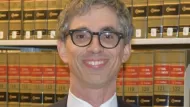I recently finished reading Foreclosing the Dream, by William Lucy. The most interesting parts of this book are the first chapter and the last appendix, both of which tell us where foreclosures are (or at least were in 2008, before the foreclosure crisis morphed into an international economic downturn). These figures seem to me to debunk at least a couple of the more popular explanations of the foreclosure crisis, such as: Myth 1: "Its all the fault of too much lending to the urban poor."
I recently finished reading Foreclosing the Dream, by William Lucy. The most interesting parts of this book are the first chapter and the last appendix, both of which tell us where foreclosures are (or at least were in 2008, before the foreclosure crisis morphed into an international economic downturn). These figures seem to me to debunk at least a couple of the more popular explanations of the foreclosure crisis, such as:
Myth 1: "Its all the fault of too much lending to the urban poor."
Fact: In the states most affected by foreclosures (such as California and Florida) "drive to qualify" middle-class outer suburbs had far more foreclosures than urban counties. In Northern California, only 0.2% of San Francisco's housing units were in foreclosure or preforeclosure status, as opposed to 3.3% in Contra Costa County and 3.7% in Solano County. In fact, San Francisco had the lowest foreclosure level of any San Francisco-area county. Alameda County (which includes Oakland) had a less impressive 1.8% foreclosure rate- but even that rate was below not only the suburban counties mentioned above, but the statewide average of 2.5%. Similarly, in Southern California, Los Angeles County's 1.4% foreclosure rate was far below that of drive-to-qualify Riverside County (4.4%) and San Berardino (4.0%).
And in South Florida, only 1.1% of housing units in Dade County (the most urban-like of Southeast Florida's three not-very-urban counties) were in foreclosure/preforeclosure status, as opposed to 3.9% in neighboring Broward County.
(Sort of) Myth 2: "Its all of the fault of high housing prices."
This is not a complete myth, which is why I call it a "sort of" myth: most 2008 foreclosures occurred in just four states (California, Florida, Neveda, Arizona). All of these states had median housing value/median family income ratios above the national average- almost 8-1 in California, 5-1 in Neveda, 4-1 in the other two states.
But other expensive states, mostly in the Northeast and Pacific Northwest, had comparable housing/income ratios and much lower foreclosure rates. For example, in New Jersey, 2007 housing prices were 4.6 times family income. Yet only 0.4% of housing units were in foreclosure/preforeclosure status, below the 0.8% national average.
If uses changes in housing/income ratios over the 2000s (to distinguish between places that became expensive more rapidly and those that were always expensive), one finds similar results. The "Big Four" states had increases ranging between 57% (Arizona) and 97% (California)- among the highest in the nation, but not significantly different from low-foreclosure states such as New Jersey (76%), Rhode Island (68%) or Maryland (75%).
So what does make these four states different from all others? Anyone want to explain?

Maui's Vacation Rental Debate Turns Ugly
Verbal attacks, misinformation campaigns and fistfights plague a high-stakes debate to convert thousands of vacation rentals into long-term housing.

Planetizen Federal Action Tracker
A weekly monitor of how Trump’s orders and actions are impacting planners and planning in America.

In Urban Planning, AI Prompting Could be the New Design Thinking
Creativity has long been key to great urban design. What if we see AI as our new creative partner?

King County Supportive Housing Program Offers Hope for Unhoused Residents
The county is taking a ‘Housing First’ approach that prioritizes getting people into housing, then offering wraparound supportive services.

Researchers Use AI to Get Clearer Picture of US Housing
Analysts are using artificial intelligence to supercharge their research by allowing them to comb through data faster. Though these AI tools can be error prone, they save time and housing researchers are optimistic about the future.

Making Shared Micromobility More Inclusive
Cities and shared mobility system operators can do more to include people with disabilities in planning and operations, per a new report.
Urban Design for Planners 1: Software Tools
This six-course series explores essential urban design concepts using open source software and equips planners with the tools they need to participate fully in the urban design process.
Planning for Universal Design
Learn the tools for implementing Universal Design in planning regulations.
planning NEXT
Appalachian Highlands Housing Partners
Mpact (founded as Rail~Volution)
City of Camden Redevelopment Agency
City of Astoria
City of Portland
City of Laramie



























